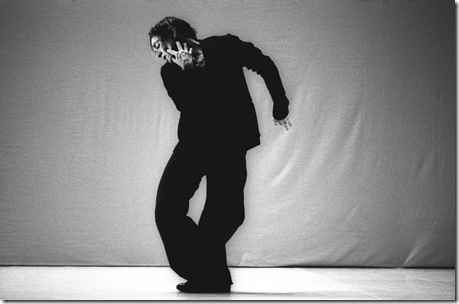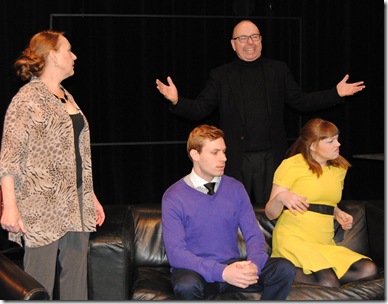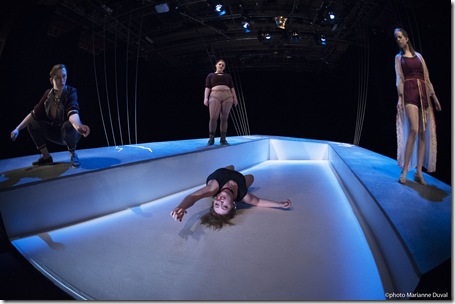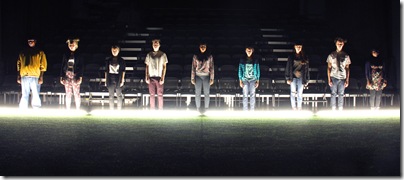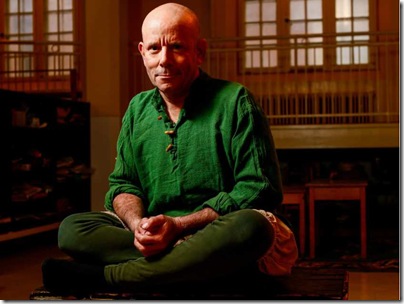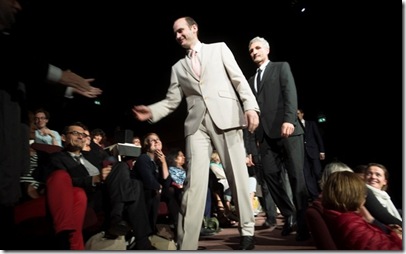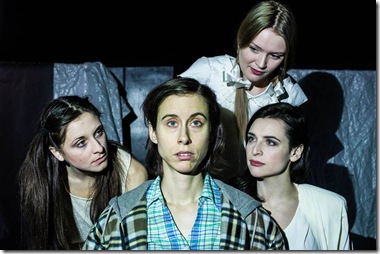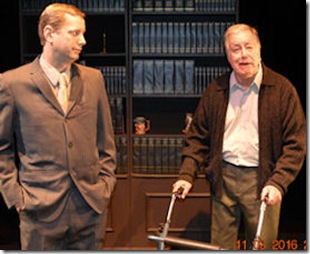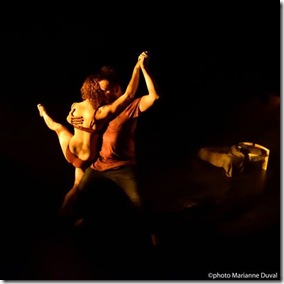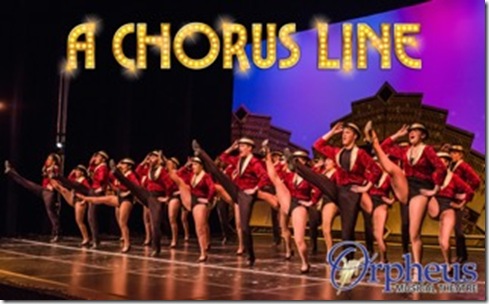Bach, Glen Gould and María Muñoz in perfect symbiosis at the National Arts Centre!
Photo. María Muñoz, courtesy of the NAC
One would not be mistaken if one defined María Muñoz as a performance artist as much as a dancer. Her research with her collaborator Pep Ramis in the context of the production company Mal Pelo is clearly determined by the meeting of musical performance, by the creative links between lighting and space as well as by the transformative use of film that locates the dancer’s body on a screen at the back in a new mode of corporeal dialogue with these multiple elements. Her moving presence on stage is fluid and beautiful to watch. It reveals baroque order juxtaposed with searing emotion, passages of strength and flowing romanticism. It appears to be responding to the rhythms of the allegro, the presto and the andante time signatures of the preludes and the fugues based on Glen Gould’s interpretation of portions of Johann Sebastian Bach’s Well Tempered Clavier integrated into her work. In fact, we almost have the feeling Gould is really in the wings, mumbling over his keyboard as his fingers fly at a phenomenal rate.
It could be the way the dancer anticipates the arrival of a bass note reflecting the specific instrument style that Gould’s playing clearly imposes. During certain pieces, by lifting her hand in short clipped movements, she retrieves gestures of resistance or gestures of a chef d’orchestre ready to interiorise the whole piano performance and retain the rhythmic and emotional energy of that event. It could also be the moment when the music fades and Muñoz is left on her own in the silence of empty space. Whatever takes place, Muñoz calls up the haunting softness of an ethereal being literally possessed by these multiple forms of expression who speak to each other and propel her body forward on the stage.
